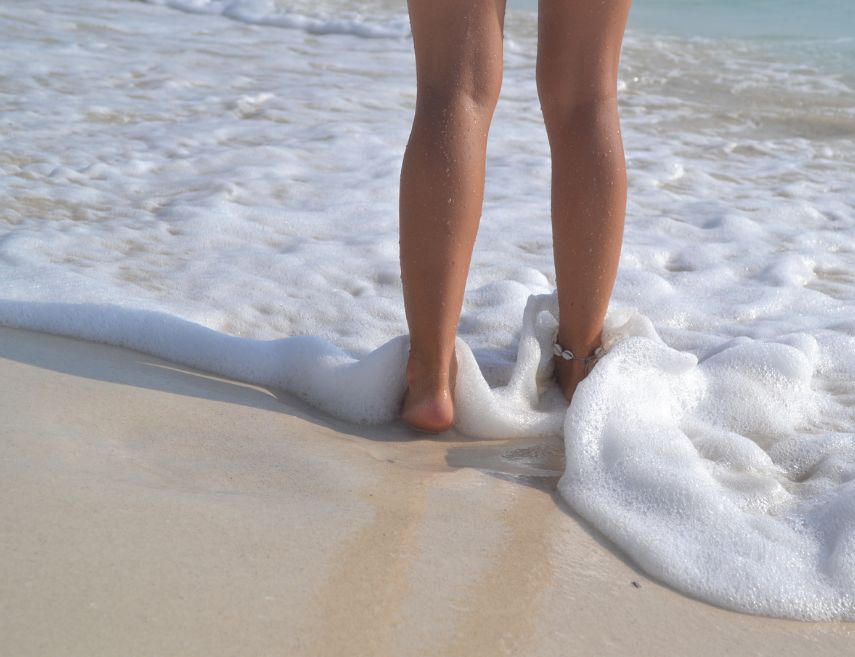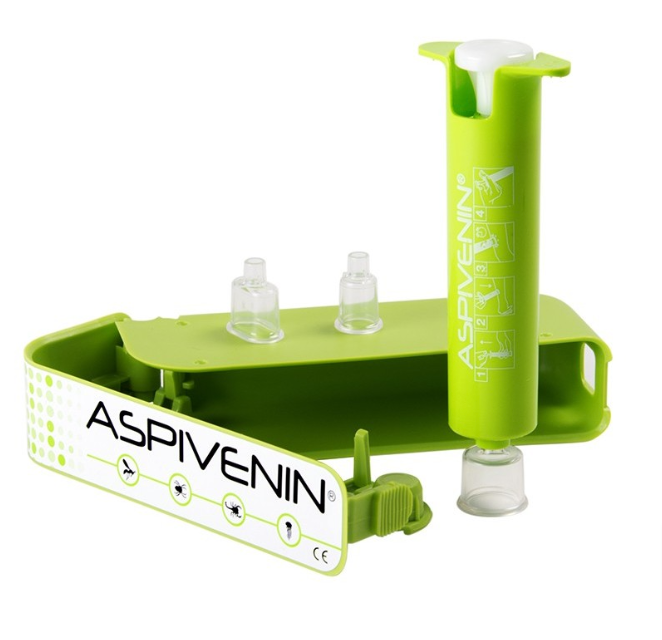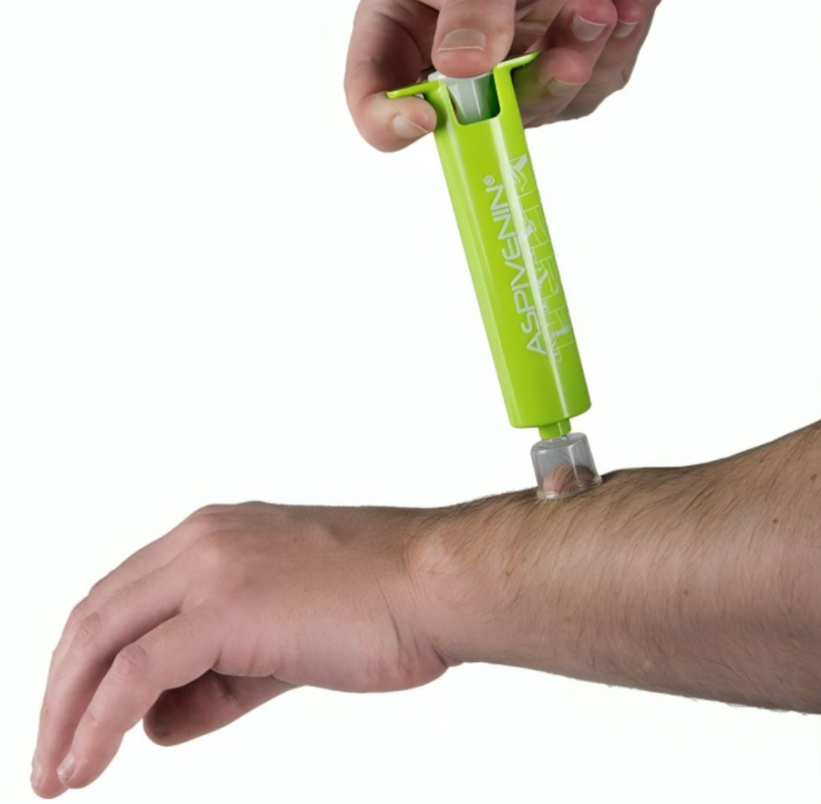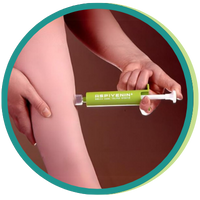
How to Treat a Weever Fish Sting? Discover the Venom Extractor Pump!
Summer calls for moments by the sea, exploring the wonderful beaches of the Portuguese coast, and enjoying the great outdoors. This is a time for leisure and fun, but it is also a period when unexpected accidents can happen. Among these mishaps, one of the most common in coastal areas is the weever fish sting.
Understanding the risks associated with a weever fish sting and knowing how to react in these cases is essential to ensure a safe and pleasant beach experience. But now, imagine you could quickly and easily remove the venom from any sting in seconds… It’s possible with the Venom Extractor Pump.
In today’s article, we will explain how to act in case of a weever fish sting and present all the advantages of always having a Venom Extractor Pump at hand. Keep reading to enjoy a worry-free summer!
The Weever Fish Sting
The weever fish is a small fish known for its venomous dorsal spines that can cause a painful sting. As they bury themselves in the sand just a few centimeters deep – waiting for prey – they often go unnoticed and are practically invisible to unwary beachgoers.
This species is very common along the Portuguese coast. Typically, weever fish hide in the surf zone and shallow waters where people walk. Because the sand is stirred up in these areas, visibility becomes even more challenging. When accidentally stepped on, weever fish react defensively by injecting venom.
Usually, at beach entrances or near lifeguard stations, there are signs indicating the risk of weever fish stings. Pay attention to this information, as it can help you take necessary precautions to avoid the pain and discomfort associated with a weever fish sting.
Symptoms
The symptoms of a weever fish sting are immediate and intense. Initially, the sting of a weever fish can be mistaken for a rock or a sharp shell. There is mild pain at first, but it quickly escalates to severe and unbearable pain.
The pain associated with a weever fish sting is often described as excruciating and may be accompanied by swelling, redness, and in more severe cases, nausea, vomiting, and difficulty breathing. While most cases of weever fish stings do not result in serious complications, the discomfort can be significant and can ruin anyone’s vacation.
Immediate First Aid
Although a weever fish sting is typically very painful, the injuries it causes are minor and can usually be treated immediately without needing medical assistance. It is essential to stay calm and seek help from lifeguards, who will know what to do:
- As soon as possible, place the affected area in hot sand.
- Look for any fish spines that may be stuck in the skin and remove them. Avoid using your hands directly to prevent another sting.
- Immerse the affected area in hot water, as the elevated temperature will help degrade the venom – but this is effective only within the first 30 minutes after the sting. If hot water is not available, use another heat source such as a lighter.
- Clean and disinfect the sting site.
- If the pain is severe, take a pain reliever or anti-inflammatory.
Usually, the pain from a weever fish sting lasts between 2 to 24 hours. If the pain persists after following these steps, it is important to seek medical help. If you experience persistent fever, nausea, dizziness, excessive sweating, muscle contractions near the sting site, or any other serious symptoms, seek medical attention promptly.
What Not to Do?
As important as knowing what to do when stung by a weever fish is knowing what not to do Some actions that are thought to be correct in these situations can actually worsen the situation and should therefore be avoided. Here are some things not to do:
- Do not apply local anesthesia, such as in spray form. While it may relieve pain, it will not prevent the venom from circulating in the bloodstream.
- Do not apply ice to the sting area. Elevated temperatures help degrade the venom.
- Do not touch the spines with your hands to avoid further contamination.
- Do not cover the sting wound – let it breathe.
- Do not urinate on the injury.
Taking the right steps after being stung by a weever fish is crucial to minimizing pain and preventing complications. Therefore, be prepared and well-informed to ensure an appropriate and effective response in case of an emergency.
The Venom Extractor Pump
Although the methods mentioned above are often effective in treating a weever fish sting, imagine always having a device on hand that allows you to effectively remove venom from the sting? Fortunately, such a device exists!

The Venom Extractor Pump, or Venom Pump, is an innovative and essential device for outdoor enthusiasts: whether at the beach or in the countryside, where there is a risk of stings from venomous animals like weever fish, bees, wasps, scorpions, and snakes. Designed to provide a quick and effective response in emergency situations, it helps minimize the effects of venom and provides immediate relief.
How It Works?
The Venom Extractor Pump operates through a suction mechanism that draws venom from the affected area. When placed over the sting, the pump creates a vacuum that pulls the venom out of the skin, reducing the amount of toxin that enters the bloodstream. This process can significantly alleviate pain, swelling, and other symptoms associated with the sting.
How to Use?

- Before using the pump, wash the sting area with soap and water to remove any dirt or surface contaminants.
- Next, place the mouth of the pump directly over the sting and ensure a tight seal against the skin.
- Pull the lever to create a vacuum and start extracting the venom.
- Maintain pressure for several minutes, as indicated in the instructions, to ensure maximum venom removal.
- After use, clean and disinfect the pump to keep it in proper condition for the next use.
Which Venoms Can Be Removed with the Pump?
The Venom Extractor Pump allows painless removal of venom injected by wasps, bees, snakes, spiders, scorpions, weever fish, and some stinging plants.
Advantages
The Venom Pump is portable and easy to use. Its compact and lightweight design makes it highly convenient to carry on hikes, camping trips, beach outings, or any outdoor activity. Its simple and quick application makes it an essential tool for emergencies during vacations. Moreover, it is effective against a wide range of stings, making it indispensable in any adventure first aid kit. Manufactured with high-quality materials, the pump is reusable; simply clean and disinfect after each use. Additionally, the Venom Extractor Pump operates without batteries or power, relying solely on manual suction. Ensuring it is always ready for use regardless of location or situation.

Venom Extractor Pump
A product that painlessly removes all venom injected by wasps, bees, snakes, spiders, scorpions, spider fish and others.
Other Venoms
Besides weever fish stings, there are other creatures that can cause discomfort and pain with their stings. During vacations, especially in outdoor and aquatic environments, encountering stings from bees, wasps, snakes, or even jellyfish is common. Each of these incidents has specific characteristics and treatment needs, but all require a prompt and appropriate response to minimize venom effects and prevent complications.
How to Treat Bee and Wasp Stings?
Bee and wasp stings are painful and potentially dangerous, especially for those allergic to these insects’ venom. Immediately after the sting, sharp pain and a burning sensation at the affected site are common. The area around the sting becomes red, swollen, and may show signs of inflammation. After the initial pain subsides, the area can remain sensitive and itchy.
In these cases, it’s crucial to remove the stinger from the skin as quickly as possible, as it continues to inject venom into the bloodstream for some time after the sting. Unlike weever fish stings, cold therapy is essential here to reduce swelling and pain – you can use a cold compress or, as commonly done, a coin. Use the Venom Extractor Pump to remove some of the venom and consider taking antihistamines to alleviate symptoms related to the sting.
How to Treat Snake Bites?
Snake bites require immediate attention and proper treatment to prevent serious and potentially fatal complications. Knowing the appropriate first aid and steps to treat a snake bite can save lives and significantly reduce venom impact.
After a snake bite, intense and increasing pain at the site is common. The surrounding area becomes swollen, red, and may begin to blister. Symptoms indicating venom spreading throughout the body include nausea, vomiting, dizziness, difficulty breathing, and weakness. Abnormal bleeding may also occur due to the effects of the venom.
Therefore, seeking immediate medical assistance is essential. Meanwhile, the bitten person should remain calm and still to slow venom spread throughout the body. Immobilize the bitten limb and keep it below heart level. If available immediately after the bite, the Venom Extractor Pump can be very useful in reducing the amount of venom circulating in the bloodstream.
How to Treat Portuguese Man o’ War and Jellyfish Stings?
Portuguese Man o’ War and jellyfish have tentacles filled with stinging cells that can cause intense pain, irritation, and in severe cases, systemic reactions. The sting from these creatures causes immediate and intense pain, almost akin to a burn. Contact with the tentacles can leave red or purple marks on the skin, which may swell and blister. The skin around the sting site can become red, swollen, and itchy. In more severe cases, nausea, vomiting, difficulty breathing, headaches, and dizziness may follow.
Stings from Portuguese Man o’ War and jellyfish usually occur in water, so there is a risk of drowning. Use tweezers or another tool to remove any tentacles still stuck to the skin, and avoid using bare hands to prevent spreading the toxins. Rinse the affected area with seawater, avoiding rubbing the affected area, and apply heat, which will help with pain and irritation. You can then use burn-specific ointment to help control discomfort.
Worry-Free Summer!
Enjoying summer and outdoor activities is one of the best ways to make the most of this time of year. The Venom Extractor Pump is a vital tool to ensure safety and peace of mind during your outdoor adventures. Having this device on hand can make all the difference in emergency situations, helping your whole family protect themselves from the harmful effects of venomous stings in the summer.
Remember to follow the guidelines outlined in this article and include the Venom Extractor Pump in your first aid kit. If you still have questions about how to use the pump or the advantages of our Venom Extractor Pump, feel free to contact us!
If you’re having difficulty choosing the right product for yourself or a family member, or which option best meets your needs, speak with our specialized professionals who are always available to help and advise you.
We know and have what you need!




No Comments